UPDATE: Feb. 26th, 2015 -- The New York City episode of The Traveling Photographer has just been posted.
UPDATE: Dec. 12th, 2014 -- The London episode of The Traveling Photographer has just been posted.
UPDATE: Nov. 15th, 2014 -- The Paris episode of The Traveling Photographer has just been posted.
UPDATE: Sept. 7th, 2014 -- The Dubai episode of The Traveling Photographer has just been posted.
In January Strobist was restructured from a standard, 2x/week blog into a core knowledge archive. Rather than publishing all of the time, we made the 2,000-post archive more organized and accessible. Now, Strobist only updates when there is something meaningful to say.
I did this to flip the signal to noise ratio (seriously, who needs to read that many photoblog posts every day) and to create some time for two significant projects. The first of which, The Traveling Photographer, has just dropped.
__________
Introducing The Traveling Photographer
Here's the problem with most travel photography books: they are to some degree disingenuous. They play on the idea that you'd love to be a full-time travel shooter, and build on that desire to point you in a lot of inappropriate directions.
I mean, it's cool to know how to shoot for a cover, or how to get in touch with picture buyers for travel mags or how to (try to) sell your work as travel stock. But the reality is that only a very small percentage of people who try will actually make it as travel photographers.
Which is why the first thing I did with this new video series was to throw out that assumption. Here's what I went with instead.
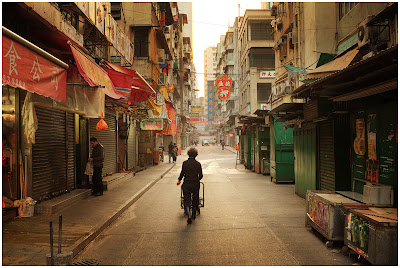
Travel is a wonderful thing. But it is also a time-compressed, experience-rich period in when the balance between photography and the other parts of your life can be a bit stressed.
Most of the time when traveling you are simultaneously serving several masters. You are an individual, experiencing personal growth as a traveler. You are a spouse. You are a parent. And you are a photographer.
To that last item, many photo enthusiasts who travel do so overburdened both with camera gear and photo expectations when they hit the road. Seriously, I often see people in fantastic destinations weighed down by 30 lbs of gear—and a surprising amount of internal pressure to Get the Shot—while they are on freaking vacation.
Here's the thing, and the the main premise of TTP: You're probably not being paid to shoot abroad. You are doing it for the joy, for the experience, to record your family's memories and just maybe get something killer for the wall in your photo den.
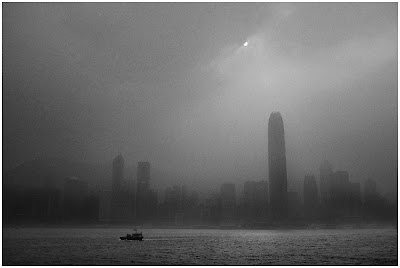
And that is our mission: to show you how to travel lighter, to exist most of the time as merely a traveler/spouse/parent who is present in the moment and get the most out of your experience—without ruining it for everyone by being Full-Time Photo Guy. And we'll show you how/when/where to efficiently slip out of that role to come back with some gorgeous photographs.
TTP is a holistic approach to travel photography. We're about photo vs. life balance when you're on the road.
__________
The Traveling Photographer: Fundamentals
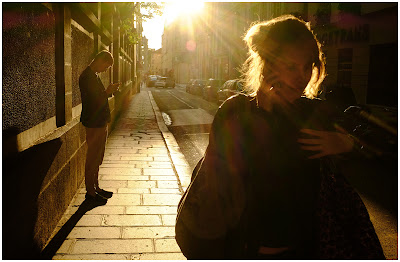
In TTP:Fundamentals, you'll learn:
1. How to travel very efficiently both with respect to your pack list and your gear
2. How to co-exist with your traveling companions outside of your role as destination photographer
3. How to make your photography a nimble asset to your travel experience, as opposed to a zero-sum-game competitor
4. How to organize your thinking as a photographer (we steal techniques from pros, here) to become far more efficient as a photographer
5. How to make the most of a few pre-planned slices of time to get striking results without encroaching on the most important thing: your family's travel experience
I can't tell you how many photographer/travelers I have seen in how many fantastic locations who looked like they were geared up for a D-Day invasion. Two bodies. Street-sweeper zooms. Tripod. Spouse. Kids. Sightseeing/shooting with all of this in tow at freaking noon.
Almost invariably, they don't look happy. Seriously, WTF. What is the main goal here?
The sweet spot is in realizing that you want to be Clark Kent most of the time, and only when the payout is worth it to slip into a phone booth and become Super Photo (Wo)Man.
Our goal is to be your phone booth.
__________
With City-Specific Episodes

After TTP:Fundamentals, which is about two hours long, we hit the road to a series of five (this year) cities around the world: Hong Kong, Dubai, Paris, London and NYC.
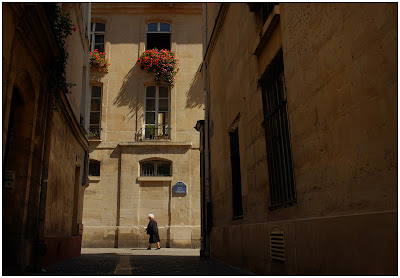
In these cities, which should be on the short list of any traveling photog, we cover everything you need to know before heading to one of these destinations with your camera. We're like Your Man in Hong Kong—or wherever. We're your fixer.
We cover specific travel logistics as they relate to photographer/travelers, inside knowledge from local shooters and choose some well-curated photo experiences designed to help you get some trophy shots.
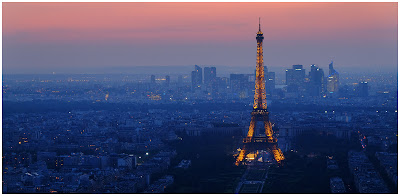
Looking for that killer skyline shot? It often needs to include the thing all of the iPad-toting tourists are standing on. We'll show you where, when and how to make your photo better.
Finally, we include some off-the-beaten-path experiences that will make your trip that much better.

Each city-specific episode is about an hour long. So far TTP:Fundamentals and TTP:Hong Kong have already been published. Dubai, Paris, London and NYC are set to follow in the coming months. After that, we will make the decision on whether or not to continue based on your viewership. (So watch early and often!)

The "we" in this equation is myself and photographer/videographer Andrew Tomasino, pictured above. This is something we truly love producing, and would be happy to spend some time during the next few years of our lives doing so.
__________
Where to Watch The Traveling Photographer

In early 2013, web training behemoth Lynda.com acquired the rights to stream Strobist's 6-DVD lighting course, Lighting in Layers. The synergy was such I decided to pitch Lynda with what I considered to be a wildly ambitious idea: a city-specific, travel photography series, filmed all over the world.
They said yes.
(Retroactive note to self: Be careful what you wish for.)
Long story short, Lynda.com is now where The Traveling Photographer series resides.
Lynda.com is a subscription-based site with a phenomenal amount of educational content. The cost is $25/mo., with no contract needed. That means you can sign up for a month and binge-watch an insane amount of cool stuff in addition to The Traveling Photographer. Like the aforementioned Lighting in Layers collection. Or Steve Simon on street photography. Or lifestyle shooting with Nick Onken. Or how to nail copyright infringers with Attorney Carolyn Wright. Or how to use a view camera, with photo legend Douglas Kirkland. Or camera-specific video manuals. Or ridiculous amounts of detailed, professionally produced software (photo and otherwise) tutorials.
For $25 you can gorge yourself for a month until your eyeballs fall out and then walk away if you want. Whether you stay or not, it's kind of a no-brainer.
And because many thousands of companies use Lynda as their corporate partner for training, you may well already have full access at work. Check around at your company and see.
I hope you enjoy The Traveling Photographer series. Andrew and I had a great time producing it. And even more so, I hope it adds to your experience both as a traveler and as a photographer.
__________
:: My Lynda.com Author Page ::
__________













 If you are a photographer and you shoot people and you have not put some time and effort into making what is for you an appropriate, real head shot then I would submit that you might not be getting the concept, as they say.
If you are a photographer and you shoot people and you have not put some time and effort into making what is for you an appropriate, real head shot then I would submit that you might not be getting the concept, as they say.











